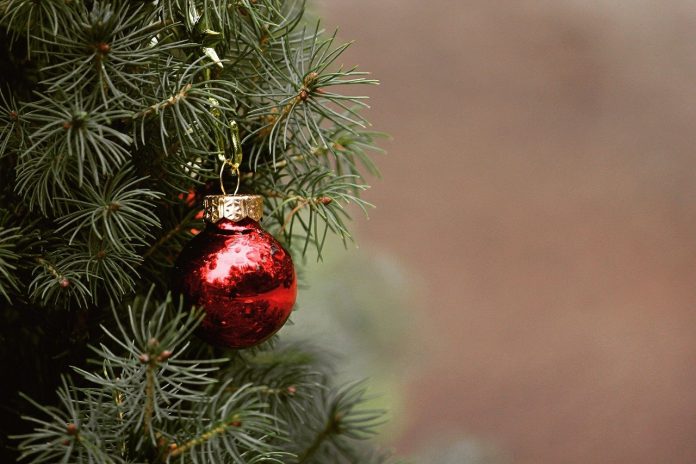I understand why people love the holidays so much. I’m not a total Scrooge. I get it. I love that my daughter still gets excited when her elf on the shelf shows up at the beginning of December and that she tells me how many days are left until Christmas every day after work and that we do Christmas shopping, present wrapping and cut-out cookies together. Throw in Die Hard at some point and I enjoy Christmas just as much as the next person.
But I have to admit, I always reach my threshold for waste, which seems to be abundant during the holidays. From the gifts to the decorations to over-consuming resources in general, all of the excessiveness gives me anxiety. I might be more of a Grinch than a Scrooge in that regard.
I think there’s a way to enjoy the festivities and reduce the impact your celebration has on the environment. If everyone does their part, we can all enjoy a more eco-friendly holiday season.
- Use recyclable and reusable gift wrap. Wrap your gifts with wrapping paper made from recycled paper or use wrapping paper that can be recycled. Avoid foil-backed wrapping papers and those with glitter. Skip plastic ribbon and bows. And keep the same principles in mind when it comes to cards and gift bags. Additionally, if you don’t already, save gift bags to be reused next season.
- Give more sustainable gifts. Consider giving thrifted and secondhand items as gifts. If you are buying new, purchase from companies with responsibly-sourced products. You might also consider donating to a cause or organization in the gift recipient’s name instead of buying something.
- Give the gift of conservation. Consider supporting a conservation initiative for Christmas. One year Santa adopted a Sloth via the World Wildlife Fund for my daughter, Vayda, instead of purchasing another gift. She liked it just as much as everything else she received.
- Teach a skill instead of giving a gift. Instead of getting more stuff for the loved ones in your life, consider teaching a skill or learning something new together. If it ever gets cold enough, long enough for ponds to start freezing in northeast Ohio, my dad is planning to take me and Vayda ice fishing. If you ask me, that’s better than unwrapping something one Christmas.
- Returns, exchanges and missing pieces. With more of us ordering our gifts online, we’re creating more packaging waste. That gets exacerbated when dealing with returns, exchanges and missing pieces. Instead of returning the item and having another one sent because you saw a lower price for the same item, see if you can get a refund for the price difference first by talking to an actual customer service representative. In the case of missing pieces, see if you can be refunded just for the portion that was missing rather than having a brand new item shipped out and shipping the other one back. A lot of companies will follow policies that dictate the revolving door of deliveries, but sometimes it can be avoided. In the case of exchanges, consider buying gift cards for picky family members and friends instead of purchasing a gift they may have to ship back. This way they can get what they want and we’re reducing the number of materials and resources used to get it.
- Reduce food and table waste. Year-to-year try to keep track of the number of guests you have and how much food you have leftover and adjust to reduce food waste. Offer leftovers to guests or plan meals, such as soups, casseroles and pot pies, that the leftovers can be incorporated into in the days following your holiday feast. And try to eliminate paper products from holiday meals. Use dishes, silverware, napkins and tablecloths that can be washed and reused.
- Christmas lights. Replace old strings of lights with LED lights. They use less energy and are safer than traditional bulbs. Additionally, consider using a timer to set your lights to turn on for an allotted time and then turn off. It’s another way to save energy while you sleep.
- Get a live Christmas tree and recycle it. Did you know that you have to own an artificial for at least 10 years before it’s more eco-friendly than buying a living tree from a sustainable forest? You do now. Buy a live Christmas tree and recycle it after Christmas is over. Live trees can be recycled and used as a windbreak for wildlife, a bird feeding station, habitat and forage for fish in a pond, mulch in community parks and gardens, wood for a firepit, shoreline stabilizers along lakes and rivers and much more. You can even burn your tree and spread the ashes in your vegetable garden as they are nutrient and mineral-rich. Check out the resources below for additional ideas:










